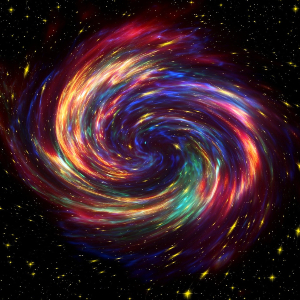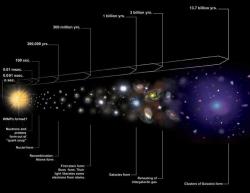In the first moments, matter in space was in the form of an extreme quark-gluon plasma. New research confirms that this substance is not similar to a gas as originally thought, but rather a liquid. Analyzes also show that quark-gluon plasma changes shape over time, differing from other forms of matter.
–
What did the universe look like in the first microsecond? Credit: CC0 Public Domain.
–
The universe has existed for about 13.8 billion years. However, cosmologists are very interested in the first moments of the universe’s existence, in which the singularity of the Big Bang changed into a somewhat more understandable substance. We have a rough idea of what was happening then, but we still miss the details and maybe some essential things.
You Zhou. Credit: Niels Bohr Institute.
–
You Zhou of the Danish Niels Bohr Institute at the University of Copenhagen and his colleagues studied quark-gluon plasma, apparently the only form of matter that existed during the first microsecond after the Big Bang. A few moments later, the quark-gluon plasma disappeared again, expanding the universe to emerge the hadrons and other particles that make up the universe today.
At CERN, the LHC’s large hadron collider was able to recreate the quark-gluon plasma after 13.8 billion years, so we can study the oldest intelligible form of matter in the universe. According to Zhou, a quark-gluon plasma is formed at the LHC during extreme particle collisions, after which we can observe its evolution over time, similar to that that occurred after the Big Bang.
Evolution of the universe. Credit: NASA / CXC / M. Weiss.
–
In addition to the enthusiastic use of the most expensive instrument on Earth, Zhou and his colleagues have developed an advanced algorithm for analyzing particle collisions at the LHC. Their results showed that the original quark-gluon plasma was in the form of a liquid and that it differed from other forms of matter by constantly changing its shape.
This is a relatively large reversal from the original idea that the quark-gluon plasma was to be in the form of a gas. However, as it turns out, this substance has a smooth and soft texture, similar to water. According to Zhou, the changes in the shape of the plasma are quite surprising. They didn’t expect something like that. The results of the research expand the mosaic of knowledge of the Big Bang, which still remains a magnificent puzzle of our time.
Literature
University of Copenhagen 21. 5. 2021.
Physics Letters B 818: 136354.
– .




![The love horoscope for June for all signs. True love awaits some! [lista – 27.05.2021 r.] The love horoscope for June for all signs. True love awaits some! [lista – 27.05.2021 r.]](https://d-art.ppstatic.pl/kadry/k/r/1/17/5d/60abb95a70552_o_original.jpg)